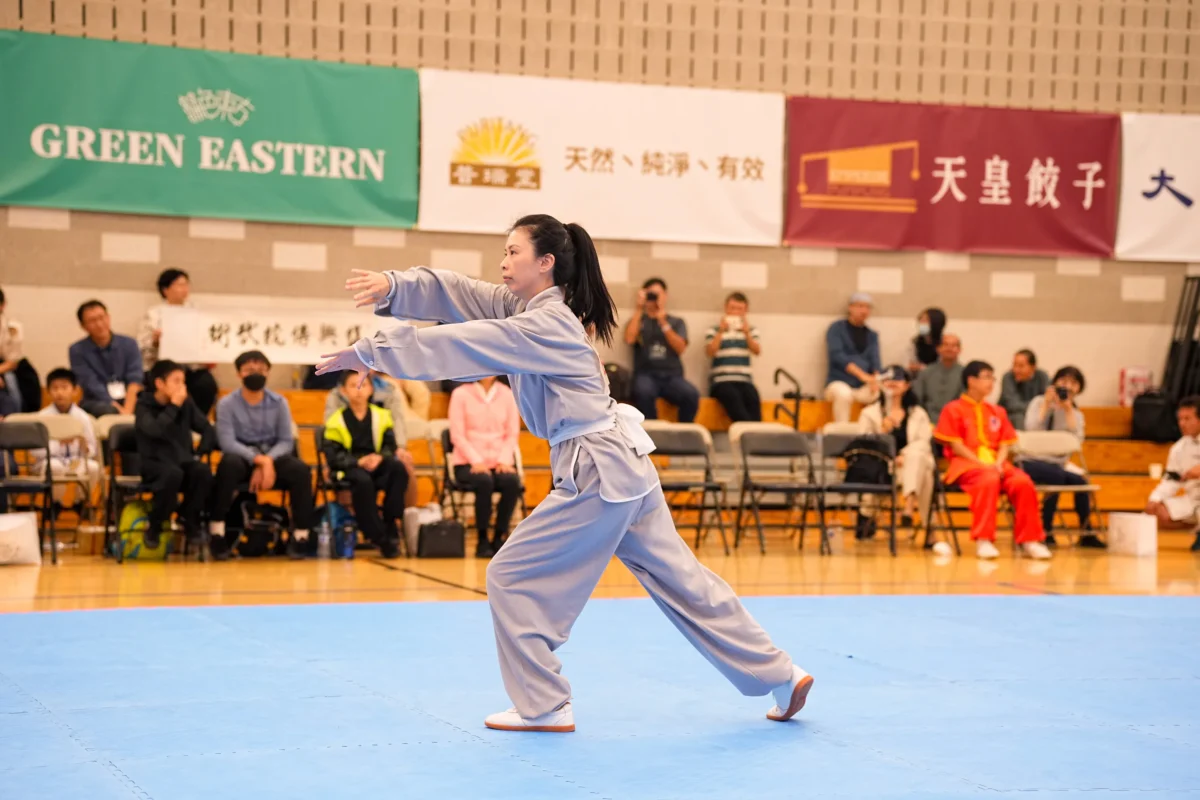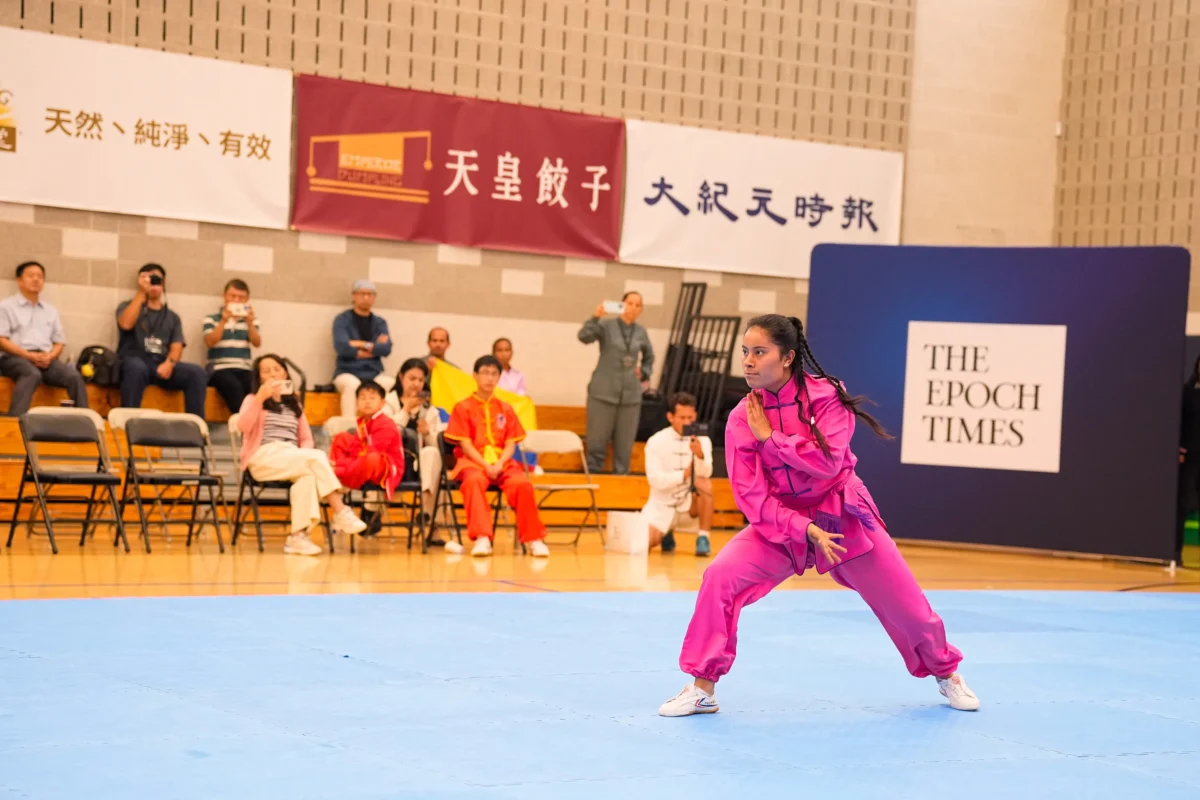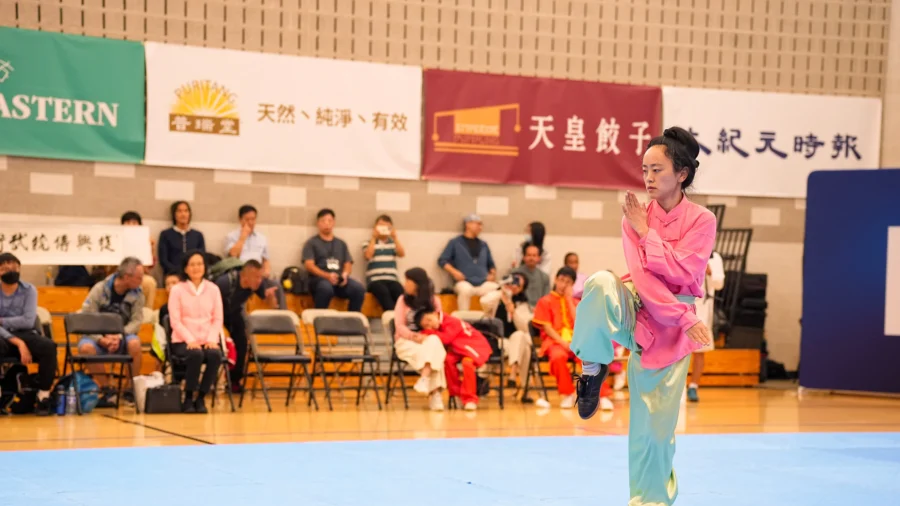Traditional Chinese martial arts are beautiful, says Li Youfu, chair of the NTD International Traditional Chinese Martial Arts Competition, which on Aug. 30 welcomed 91 martial artists from 11 countries to New Jersey for the 2024 competition. Preliminaries are underway, with semifinals scheduled for Sept. 1 and the live broadcast of the finals on Sept. 2.
Li is a champion of the concept of martial virtue, a concept inseparable from the true traditional martial arts. Today, these traditional Chinese martial arts styles that had been passed down for thousands of years are all but lost to history, so Li is often asked how one can recognize true, traditional martial arts.
They are a beautiful form, he says, as one must move the body in a harmonious, efficient way. He said he doesn’t mean that the forms are simply eye-catching, flashy, or dazzling. The beauty he refers to is both an aesthetic and transcendental beauty, and Li sought to give some examples.
Li, who was born before the Cultural Revolution carried out by the Chinese Communist Party (CCP), learned from a traditional Chinese martial arts master before most of them were put to death or had left for the mountains in hopes of taking their secrets with them.
These traditional styles have been more than just lost, some have been destroyed deliberately, Li said.
After those famed martial arts villages like Wudang and Shaolin were emptied by the communists’ violent revolutions, new people would settle there, practicing mixed martial arts and contemporary forms.
The CCP went on to promote martial arts, but absent virtue, and focused on combat and fighting. There were many people capable of beating someone bloody, he said, but how many people who were capable of protecting the innocent and stopping the evil cadres who preyed on the innocent during the communists’ many violent campaigns over the decades? “Might makes right” is an ugly ideology, and these new forms are base and ugly, Li said; moves like gouging out an opponent’s eyes are not something found in traditional martial arts.
Li gave the example of Tai Chi Chuan, a style whose last masters have since passed away and is no longer practiced in its original form, where it was a feat to even follow the moves of a Tai Chi Chuan master by eye, because he was so swift as to be untouchable.
You can recognize a skilled practitioner of traditional martial arts in their natural looking movements, Li said.
This doesn’t mean that martial arts are not used in combat. Traditional Chinese martial arts have been practiced for thousands of years, passed down mostly in Buddhist and Taoist temples, and said to originate as early as from the Yellow Emperor whose reign is estimated to have begun in 2698 BC. Martial virtue teaches practitioners of martial arts to differentiate between good and evil, and stop evil while protecting the kind. In ancient China, it was also a form used in war.
And because martial arts were used in such high-stakes situations, the forms and sets of each martial arts style were sacrosanct. Altering the form would only put one at risk of mistake in a life-or-death situation.
Alina Jin is a student of a new martial arts school named Fuxin College, which has a mission to participate in the renaissance of traditional martial arts.
Jin, participating in the competition for the first time, said that the teachers at Fuxin teach much more than the movements; they explain to students the history, culture, and meaning behind the movements. The physiology is explained from the perspective of the divinely inspired traditional Chinese culture, and can be understood from the perspective of acupuncture points and meridians, yin and yang, or the flow of energy.

A byproduct of this deep study of the human body is good health, and several participants in the NTD competition shared ways in which their health had greatly improved after taking up traditional martial arts.
One said he no longer suffered the sort of injuries he would incur when he practiced contemporary martial arts, as understanding and honoring how the body can and is meant to move meant no longer overextending to do certain moves or moving in an unhealthy way. Another said she lost 60 pounds in the one year since she began practicing martial arts, going from obese to a manageable weight while becoming fit.
Mauricio Pinzon said he has been free of any health problems since he began practicing traditional martial arts in a Taoist monastery in Colombia 20 years ago. The monks there teach the community to respect others, to respect life, and to respect nature, he said, which is in line with martial virtue.
Pinzon said the Taoist martial artists in the temple are known for their good health, so they often receive visitors seeking to health from an ailment that has baffled their doctors. They teach these people not only martial arts, Pinzon said, but the holistic and healthy way of living that traditional martial arts demands. They live a clean life there, he said, and recreational drugs, cursing, lying, stealing, and taking advantage of others are strictly banned.

Traditional martial arts can be practiced by anyone, and at any age, Li said. At the competition, practitioners ages 4 to 73 were present.
But this doesn’t mean martial arts are easy, either. Martial virtue demands that one endure hardship and sacrifice ego, Li said. It requires strength and dedication.
This means training every single day, even if just for a few minutes said Ellen Opfermann, whose whole family practices traditional martial arts.
“You have improvement when you train consistently, even if it’s just small things,” Opfermann said. As long as you take the steps, even if they are tiny steps, you move forward, she added.
That sort of consistency comes from an internal motivation, said Robin Deng, and it isn’t something imposed by anyone else. Deng has only practiced traditional martial arts for about a year, originally in part due to external pressure to exercise, but over time she realized it has allowed an significant shift in perspective.
Practicing martial arts has taught Deng how to objectively examine her thoughts and actions and their effects, and by doing this regular it has changed her. It’s shown her her ability to persist and endure difficult new things, taught her to focus on personal improvement, and expanded her ability to problem solve as she regularly contemplates how to do new movements from the inside out.
All of these ideas are connected. Consider, for instance, that a balanced form or routine would certainly be more beautiful than a wobbly or clumsy one. The balance would require a knowledge of how movements should be executed, strength built up through diligent training to execute the movements correctly, an understanding of the human body that allows one to train with the sort of physical alignment that prevents injuries and results in beautiful form, as well as consistency in training that results in a smooth and seamless set.
“On the path of virtue, you can resolve all obstacles,” Li said.
Where to Watch
Finals will be streamed live on Sept. 2 at 1o a.m. ET.
Websites: EpochTV.com & NTD.com
App: NTD app from Apple Store and Google Play
Gan Jing World: NTD
Youtube: NTD Youtube and Epoch Times Youtube
Facebook: NTD Facebook and Epoch Times Facebook
Twitter: NTD Twitter
From The Epoch Times

